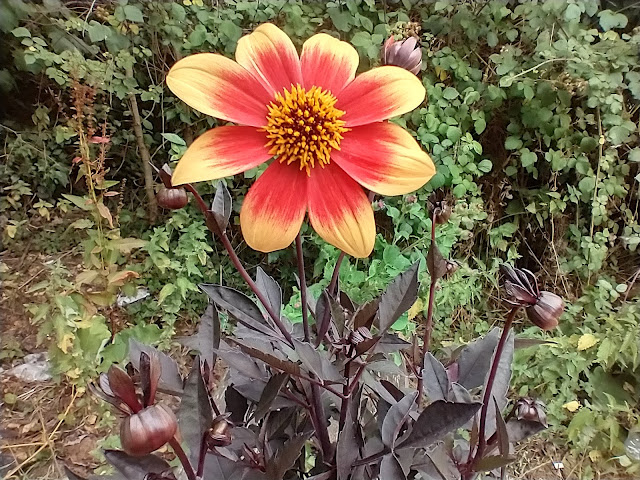The benefits of #NoMowMay
I cut a small posy of flowers for our kitchen on Sunday courtesy of the back lawn and keeping NAH away from it so we could have a #NoMowMay. I've talked about my Wild and Woolly Lawn before, and since then it's gone from strength to strength. I've enjoyed watching the large numbers of insects zooming around our garden this year* which I'm sure is the result of my relaxed attitude to the need for lawn perfection.
As well as the flowers on the windowsill, there are plenty more where they came from outside, and so I took part in Plantlife's Every Flower Counts lawn survey yesterday. With the decrease in wildlife habitats, there is an increasing recognition our gardens can provide much needed havens for wild flowers, which in turn support a wide variety of insects and other fauna.
Plantlife's survey aims to put a baseline figure on one aspect of this concept, by estimating how much our lawns can support honey bees when the grass is left to grow longer and the wild flowers creep in. I measured my lawn's area and then followed their instructions to count the opened wild flowers in a couple of random measured areas. The results show I have just 6** currently open of the 24 common ones in their ID guide, but when multiplied up by my lawn's area and the numbers I found, they alone can sustain 2,099 honey bees per day.
Add that to the rest of the nectar rich plants I have in the garden (including some which have added themselves to the lawn) I'm happy my garden is doing its bit to help, not only the bees, but a host of other pollinators too.
* = apart from the hundreds of black insects which covered me from head to toe yesterday in a matter of minutes. NAH 'hosed' me down with an air compressor to get rid of them. I see there are hordes of ladybirds poised to tackle them, so fingers crossed this problem is a temporary blip until nature restores balance to my garden existence once more.
** = dandelion, daisy, creeping buttercup, ox-eye daisy, red clover, and thyme-leaved speedwell to be precise











We’re you wearing yellow? Insects seem drawn to people wearing yellow.
ReplyDeleteNo Sue, it was wearing grey! Much more understandable if it was yellow...
Delete2,099 is an amazing number!
ReplyDeleteNot bad for a tiny lawn!
Delete